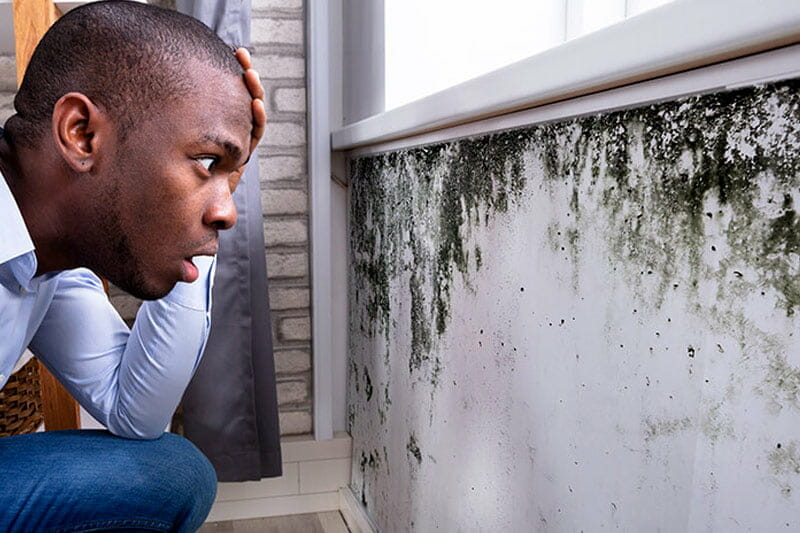Generally, most homes are not required to meet certain legal criteria concerning mold.
However, Minnesota law requires that a landlord must provide an apartment that is habitable and in reasonable repair (Minn. Stat. § 504B).
The purpose of this article is for landlords and tenants to better understand laws and their rights and responsibilities for mold.

What we cover
ToggleWhat tenant can do in case of mold presence in Minnesota?
The landlord is not responsible when it comes to minor issues caused by the tenant’s behavior, but in situations such as repairing moisture or mold clean-up, he is.
A very important thing is for the tenant to be careful with his behavior not to cause mold in the apartment. The following tips are mandatory for all current and future tenants:
- Prevent condensation on cold surfaces ( good air movement will help you accomplish this);
- Use kitchen fans when cooking and bathroom fans during and after showering;
- If you spill liquid on carpets quickly dry the carpet;
- If there is no medical reason don’t humidifiers in your home;
A timely response is in the interest of both the tenant and the landlord because delays may result in greater costs to clean and repair.
Note: See the full list of state mold laws here
How to combat mold legally - landlord-tenant
Combating mold should be a shared responsibility between the landlord and the tenant. The landlord should not neglect his responsibilities and the tenant should pay attention to his behavior and not contribute to the appearance of mold.
Start with mold inspection if mold can be seen, if a musty odor is present, or if you believe the mold is causing health problems, and pay attention, especially to hidden areas, such as plumbing access areas, crawl spaces, behind mirrors, attics, behind furnishing, closets, and cupboards.
If after the inspection it turns out that the problem is serious and cannot be safely remediated the landlord should hire a professional service provider. Keep in mind that certain moisture problems may be covered under property or renter insurance policies.
What if the landlord refuses to react?
The lack of legal requirements does not amnesty the landlord from responsibility. Minnesota State law (Minn. Stat. § 504B) decisively states that landlords must provide habitable apartments. If an apartment becomes uninhabitable it will be considered a violation of the lease.
Local government units can assist in situations when the owners of mold-damaged apartments are unable or unwilling to resolve the problem. If the landlord fails to make necessary repairs follow these steps:
Check the lease agreement
Always have a signed copy of the lease and study it well because the tenant should understand the terms of the lease agreement. Lease agreements seldom address responsibility for mold complaints specifically, although they should include language specifying how all maintenance and repair concerns are handled.
Contact the local housing department
Check if your city or county has housing codes that govern the minimum maintenance requirements of the rental units. If inspection exists you can file a complaint and request an inspection of the rental unit if your landlord neglects his responsibilities. Make sure that the owner has no right to “punish” you or in any other way resent you if you contact the inspection.
If during the inspection it is established that the landlord has violated the local housing codes he/she will receive the order to make all repairs and will be given time to make them.
Contact the local health department
On the other hand, if the local housing inspection does not exist then try to file a complaint with the local city or county health department. There are local health agencies that may apply their authority under Minnesota Statute 145A to declare a property public nuisance and may issue correction orders to the landlord.
Contact the Municipal Building Official
If there is a municipal building official you may seek assistance from them. The building official may inspect the unit to determine if it is structurally damaged. They may also enforce maintenance provisions of the building code.
Legal action
If a housing, health, or building code inspection is not available or the inspection does not result in a correction order, a tenant may still be able to establish that the unit is uninhabitable. Tenants who feel that their landlord has failed to maintain their rental unit in good repair must notify the landlord in writing and request that the repairs are made within 14 days or sooner. Keep a copy of the letter.
A tenant can take legal action if the repairs are not made within the given time frame of 14 days or the inspector’s deadline.
Who is responsible for the tenants’ belongings in cases of mold in Minnesota?
Insurance carried by the building owner does not cover the tenant’s personal belongings. Tenants are responsible for their own belongings unless they can prove that the owner’s negligence in maintaining the building contributed to the damage.
You can also purchase renter’s insurance and that way protects your belongings from damages that may occur during your lease. The terms of the policy will determine what coverage is provided. In some cases, mold damages are not covered by the policy while water damages are covered.

Tenants relocation due to mold in Minnesota
The general rule states that tenants need to be relocated in cases of mold and if the mold has made the dwelling uninhabitable. In such situations, landlords are required to remediate mold at their expense, unless the mold is caused by the tenant.
The lease terms and the laws of applicable jurisdiction will tell who must pay for the eventual tenant relocation.












